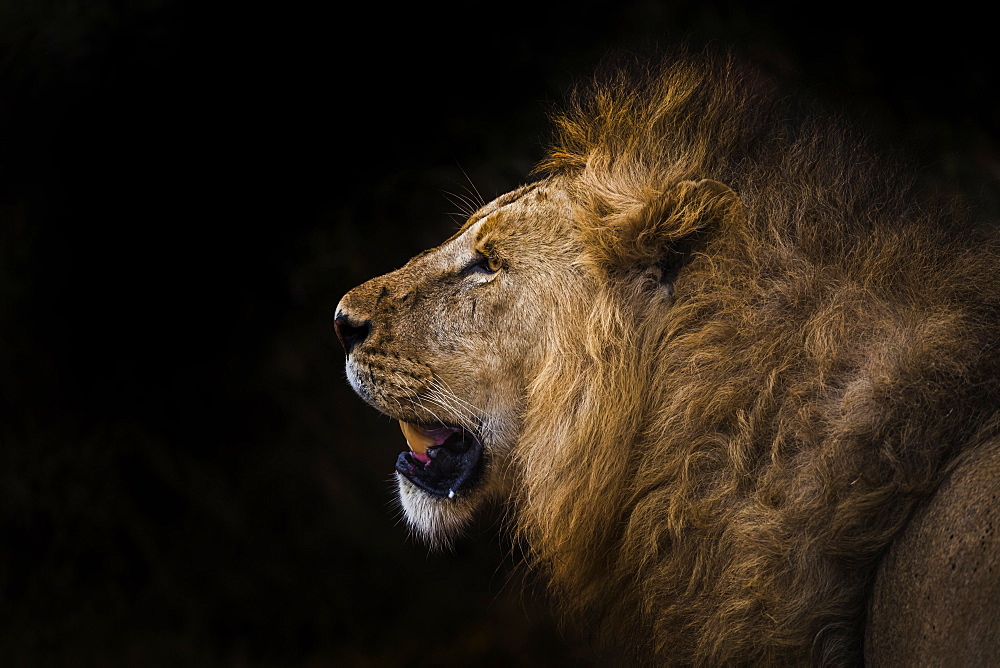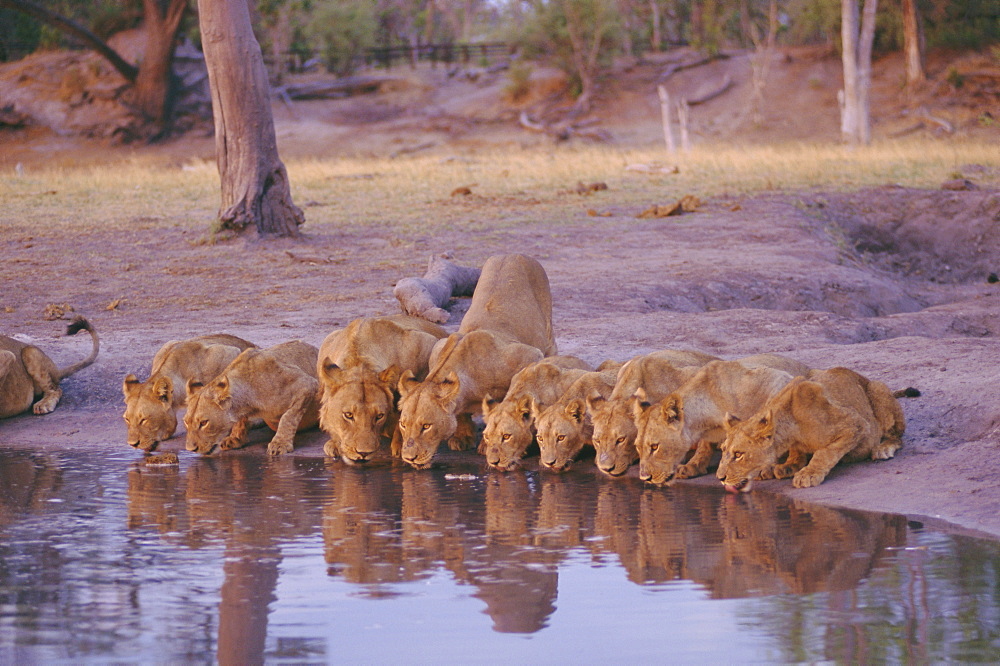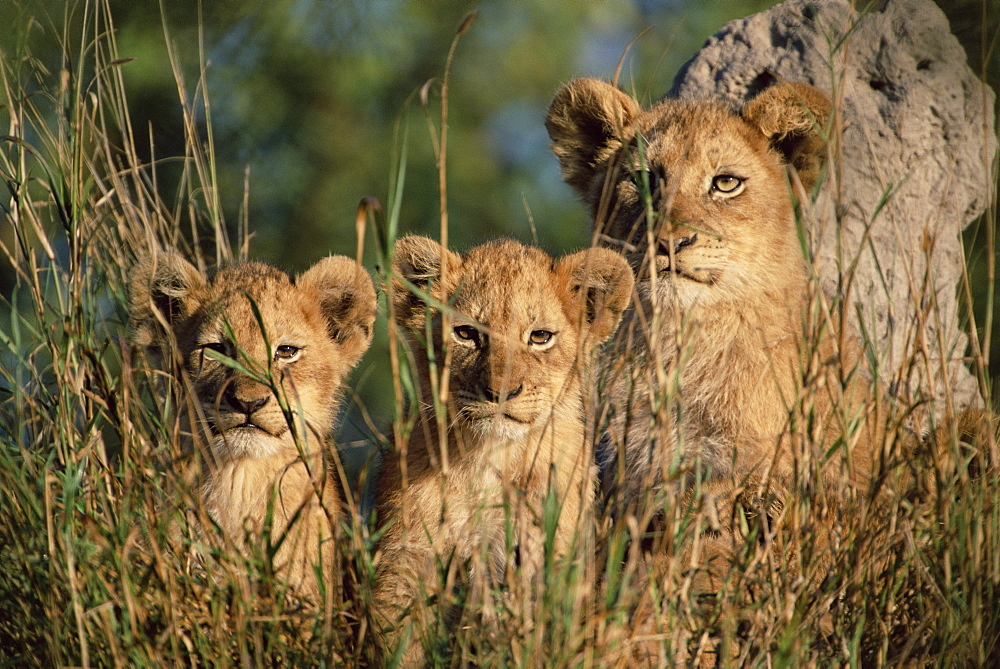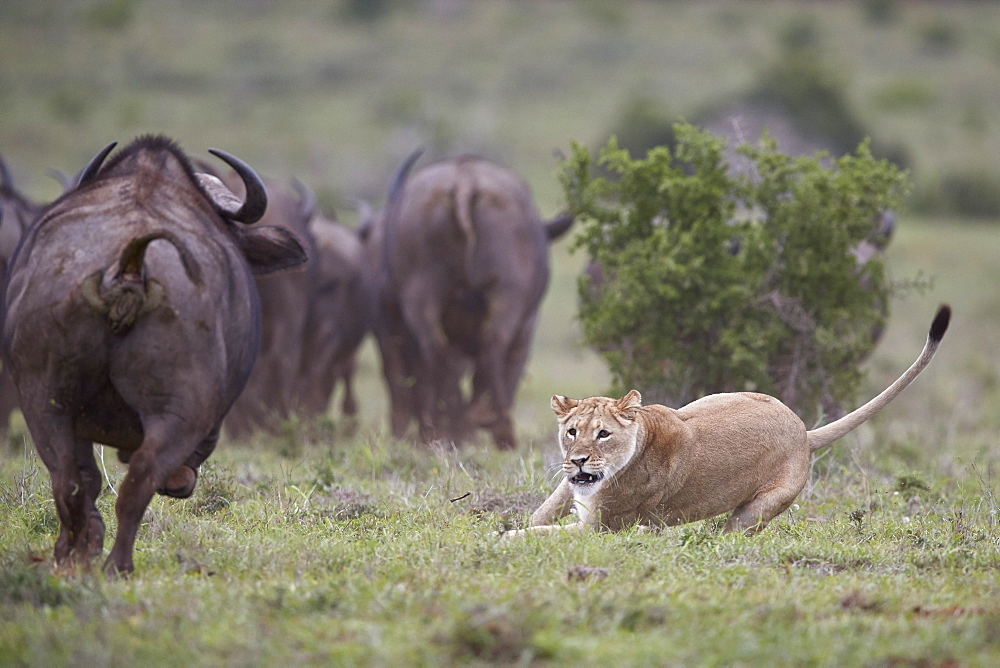King of the Jungle: Lion

The lion (Panthera leo) is a large cat belonging to the genus Panthera and is native to Africa and India. It has a muscular, broad-chested body, a short, rounded head, round ears, and a hairy tuft at the end of its tail. Lions are sexually dimorphic; adult males are larger than females and have prominent manes. They are social animals that form groups called prides, which consist of a few adult males, related females, and cubs. Female lions usually hunt together in groups and prey mostly on large ungulates. The lion is an apex and keystone predator. Although some lions scavenge when opportunities occur and have been known to hunt humans, they typically do not actively seek out and prey on them.
Habitat
African lions live in grassy plains, savannahs, and open woodlands with bushes. They do not often go into closed forests but have been seen on Mount Elgon and Mount Kenya. They like savannahs with rainfall between 300 to 1,500 mm. Lions can be found in a large habitat of 3,390,821 km2 in Africa but also exist in some forests. The Asiatic lion is only found in Gir National Park in India and likes dry savannah and deciduous scrub forest.
Behaviour
Lions spend a large portion of their day resting, with approximately twenty hours of inactivity. Although lions can be active at any time, they tend to be more active after dusk when they engage in socialising and grooming. Periods of intermittent activity persist until dawn when hunting primarily occurs. Lions only spend an average of two hours per day walking and about fifty minutes eating.
The lion is the most social species among wild felids, and it lives in a pride consisting of related individuals and their offspring. Male lions form coalitions, whereas females establish stable social units within a pride and do not allow outside females to join. Usually, female lions remain in their birth pride, while males and some females disperse.
Diet
The lion is considered to be an apex and keystone predator due to its wide prey spectrum. It is a generalist hypercarnivore whose prey consists mainly of ungulates weighing 190-550 kg (420-1,210 lb), particularly blue wildebeest, plains zebra, African buffalo, gemsbok, and giraffe. Depending on availability, they also hunt common warthog despite its weight falling outside the preferred range. In India, the most common wild prey are chital and sambar deer while outside protected areas livestock contributes significantly to lion kills. Lions usually avoid fully grown adult elephants, rhinoceroses, and hippopotamuses as well as small prey such as dik-dik, hyraxes, hares, and monkeys. Unusual prey includes porcupines and small reptiles. While lions do kill other predators, they seldom consume them.
Facts:
- Name: Lion
- Scientific Name: Panthera leo
- Class: Mammalia
- Lifespan: 12 to 17 years
- Diet: Carnivore
- Habitat: Africa and India



Sources https://en.wikipedia.org/wiki/Lion https://www.robertharding.com
ABOUT US
The website everywhereyouwant.com is free to browse and can help expand your knowledge of the world. All images and videos found on this site are provided by robertharding.com, a company committed to showcasing award-winning photographers and their world-class images and videos.
All images and videos on this website are copyrighted. They cannot be reused, including publishing in print, online or sharing on social media, without purchasing a license from robertharding.com